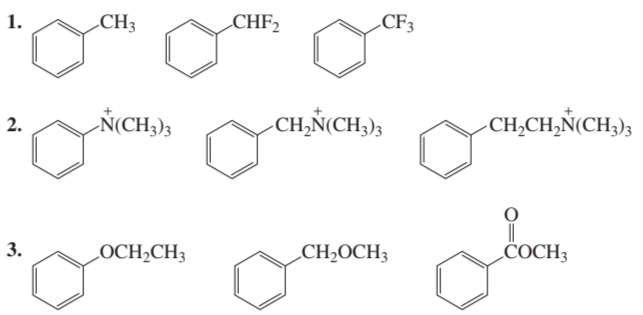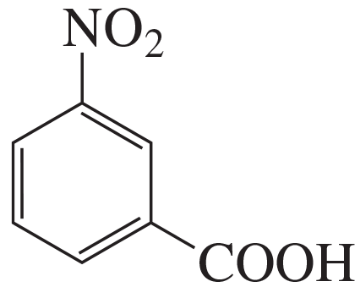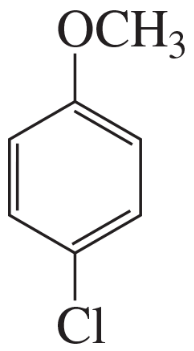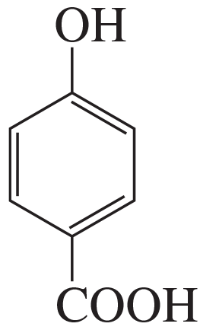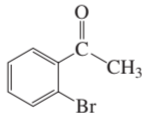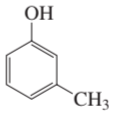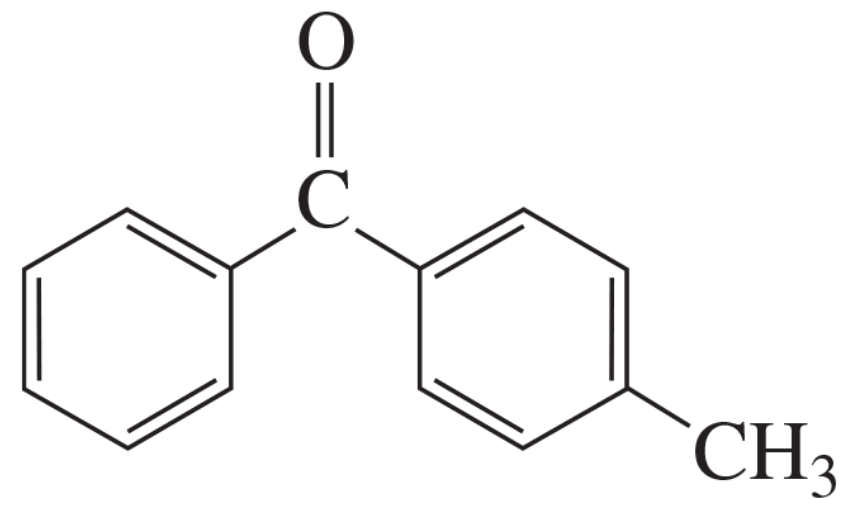 Back
BackProblem 45e
Draw the structure for each of the following:
e. 4-bromo-1-chloro-2-methylbenzene
Problem 45f
Draw the structure for each of the following:
f. m-chlorostyrene
Problem 45g
Draw the structure for each of the following:
g. o-nitroanisole
Problem 45h
Draw the structure for each of the following:
h. 2,4-dichloromethylbenzene
Problem 45i
Draw the structure for each of the following:
i. m-chlorobenzoic acid
Problem 46
For each of the statements in Column I, choose a substituent from Column II that fits the description for the compound on the right:
<IMAGE>
Problem 47c
What product is obtained from the reaction of excess benzene with each of the following reagents?
c. dichloromethane + AlCl3
Problem 48a,b
Draw the product(s) of each of the following reactions:
a. benzoic acid + HNO3/H2SO4
b. isopropylbenzene + Cl2 + FeCl3
Problem 48c
Draw the product(s) of each of the following reactions:
c. p-xylene + acetyl chloride + AlCl3 followed by H2O
Problem 48d
Draw the product(s) of each of the following reactions:
d. o-methylaniline + benzenediazonium chloride
Problem 48h
Draw the product(s) of each of the following reactions:
h. m-xylene + Na2Cr2O7 + HCl + ∆
Problem 49
Rank the following substituted anilines from most basic to least basic:
Problem 50a
For each horizontal row of substituted benzenes, indicate
a. the one that is the most reactive in an electrophilic aromatic substitution reaction.
Problem 50c
For each horizontal row of substituted benzenes, indicate
c. the one that yields the highest percentage of meta product in an electrophilic aromatic substitution reaction.
Problem 50c(1,2)
For each horizontal row of substituted benzenes, indicate
c. the one that yields the highest percentage of meta product in an electrophilic aromatic substitution reaction.
1.
2.
Problem 50c(3)
For each horizontal row of substituted benzenes, indicate
c. the one that yields the highest percentage of meta product in an electrophilic aromatic substitution reaction.
3.
Problem 52b
Show how the following compounds can be synthesized from benzene:
b. m-chloroethylbenzene
Problem 52f
Show how the following compounds can be synthesized from benzene:
f. m-hydroxybenzoic acid
Problem 55a
Rank each group of compounds from most reactive to least reactive toward electrophilic aromatic substitution:
a. benzene, ethylbenzene, chlorobenzene, nitrobenzene, anisole
Problem 55b
Rank each group of compounds from most reactive to least reactive toward electrophilic aromatic substitution:
b. 1-chloro-2,4-dinitrobenzene, 2,4-dinitrophenol, 1-methyl-2,4-dinitrobenzene
Problem 55e
Rank each group of compounds from most reactive to least reactive toward electrophilic aromatic substitution:
e. p-methylnitrobenzene, 2-chloro-1-methyl-4-nitrobenzene, 1-methyl-2,4-dinitrobenzene, p-chloromethylbenzene
Problem 55f
Rank each group of compounds from most reactive to least reactive toward electrophilic aromatic substitution:
f. bromobenzene, chlorobenzene, fluorobenzene, iodobenzene
Problem 57c,d
What are the products of the following reactions?
c.
d.
Problem 57f
What are the products of the following reactions?
f.
Problem 58a,b
For each of the following compounds, indicate the ring carbon(s) that is/are nitrated when the compound is treated with HNO3/H2SO4:
a.
b.
Problem 58c,d
For each of the following compounds, indicate the ring carbon(s) that is/are nitrated when the compound is treated with HNO3/H2SO4:
c.
d.
Problem 58e,f
For each of the following compounds, indicate the ring carbon(s) that is/are nitrated when the compound is treated with HNO3/H2SO4:
e.
f.
Problem 59
Show two pairs of reagents that would each result in formation of the following compound:
Problem 60
Why is anisole nitrated more rapidly than thioanisole under the same conditions?
Problem 61
Describe two ways to prepare anisole from benzene.


